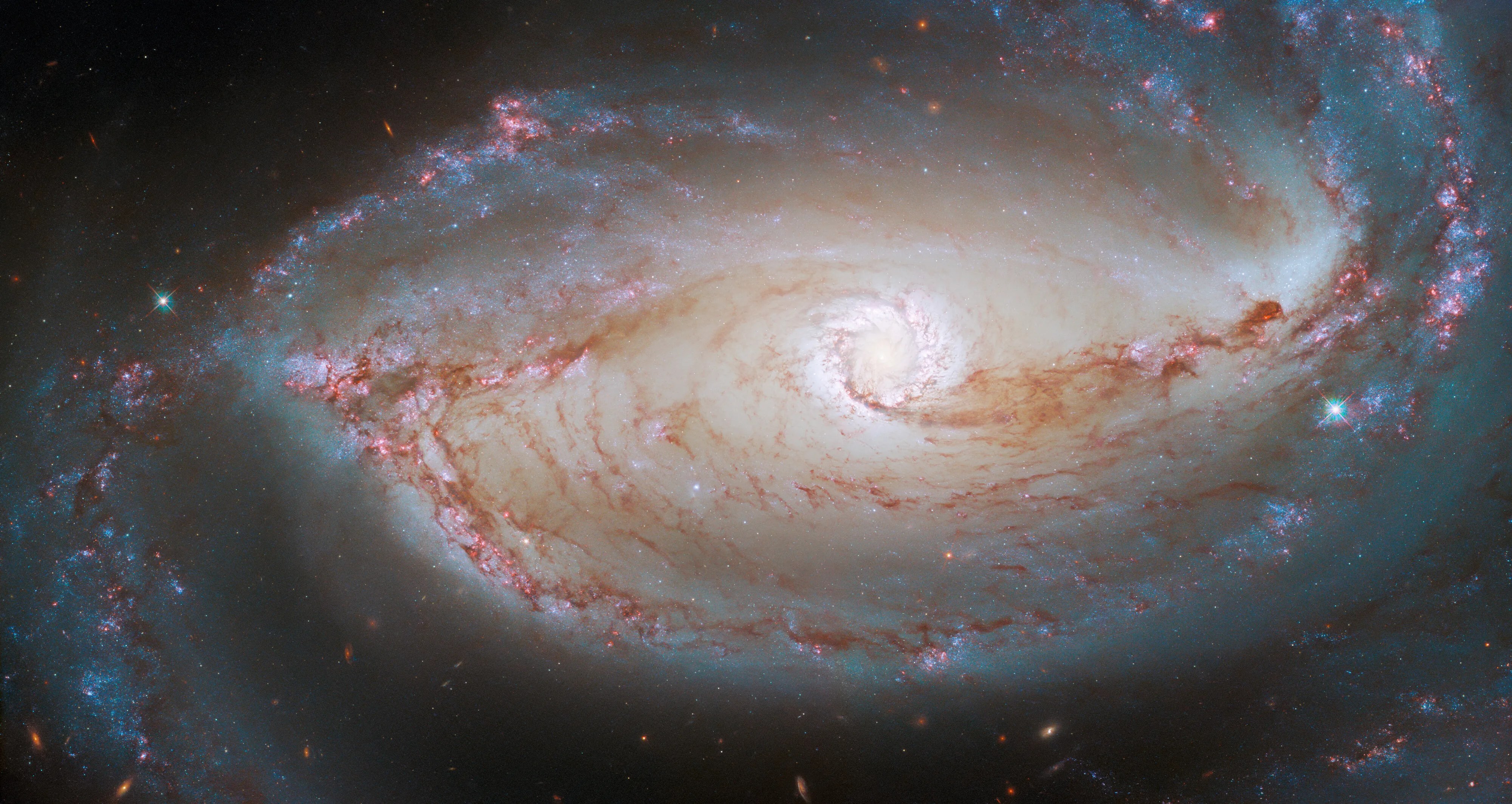2 min read

This finely detailed image shows the heart of NGC 1097, a barred spiral galaxy that lies about 48 million light-years from Earth in the constellation Fornax. This picture reveals the intricacy of the web of stars and dust at NGC 1097’s center, with the long tendrils of dust seen in a dark red hue. We can see this intricate structure thanks to two instruments on the NASA/ESA Hubble Space Telescope: the Wide Field Camera 3 (WFC3) and the Advanced Camera for Surveys (ACS).
The idea that two different cameras can take a single image is not very intuitive. However, it makes far more sense after delving into how beautiful astronomical images like this are composed. Our eyes can detect light waves at optical wavelengths between roughly 380 and 750 nanometers, using three types of receptors, each of which is sensitive to just a slice of that range. Our brain interprets these specific wavelengths as colors. By contrast, a telescope camera like the WFC3 or ACS is sensitive to a single, broad range of wavelengths to maximize the amount of light collected. Raw images from telescopes are always in grayscale, only showing the amount of the light captured across all those wavelengths.
Color images from telescopes are created with the help of filters. By sliding a filter over the aperture of an instrument like the WFC3 or ACS, only light from a very specific wavelength range passes through. One such filter used in this image is for green light around 555 nanometers. This yields a grayscale image showing only the amount of light with that wavelength, allowing astronomers to add color when processing the image. This multicolor image of NGC 1097 is composed of images using seven different filters in total.
Text credit: European Space Agency (ESA)
Media Contacts:
Claire Andreoli
NASA's Goddard Space Flight Center
301-286-1940







